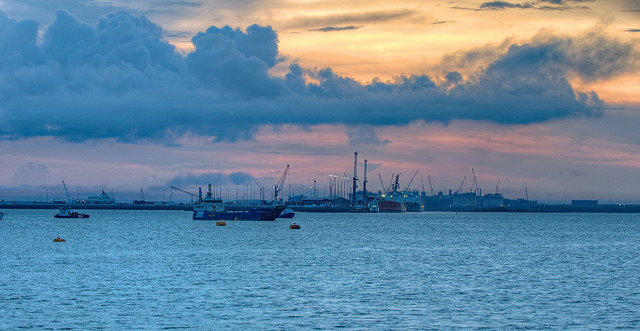
The Timor Sea conciliation between Australia and Timor-Leste has already been the subject of some significant developments in 2017. Following a contentious period last year when Australia actively contested the competency of the Conciliation Commission, recent indications are that the conciliation process is going well and may result in a permanent maritime boundary being concluded.
First, a bit of history: Australia’s seabed or continental shelf maritime boundaries in the Timor Sea and adjacent Arafura Sea were negotiated with Indonesia in 1972. The entitlements of both countries were based upon an understanding of the extent of the continental shelf found in the 1958 Convention on the Continental Shelf and maritime boundary delimitation processes adjudged by international courts and tribunals.
As such the Australia–Indonesia Timor Sea boundary to the east and west of the then Portuguese-occupied East Timor projects north from continental Australia to a point in the seabed adjacent to the Timor Trough—a natural depression in the seabed that sits between 40–60 miles off the Timor coast. Despite Australia’s efforts to also negotiate an equivalent boundary with Portugal at the time, those negotiations broke down. Events radically changed following Indonesia’s 1975 annexation of East Timor.
Australia and Indonesia in 1989 agreed upon a joint development zone in the Timor Sea which was terminated upon Timor-Leste’s independence in 2002. Nevertheless, as an alternative to a permanent maritime boundary, the 2002 Timor Sea Treaty established a Joint Petroleum Development Area (JPDA) which mirrored a portion of the previous joint development zone. Rather than sharing the potential oil and gas revenue equally, a 90/10 split was agreed upon in Timor-Leste’s favour. The Timor Sea Treaty was then supplemented and extended by the 2006 Certain Maritime Arrangements in the Timor Sea (CMATS) treaty, which included a provision that the treaty would remain in force for 50 years, meaning that no permanent maritime boundary would be concluded during the operational lifetime of any Timor Sea oil and gas field.
After a number of years of Timor-Leste asserting that Australia had engaged in espionage during the CMATS negotiations, and that as a result the treaty should be null and void, Timor initiated arbitration proceedings against Australia in 2013 seeking to overturn CMATS. However, Timor-Leste’s ultimate aim has always been to negotiate a permanent maritime boundary based on an equidistance or median line. Australia’s response to date has been to consistently rebuff these claims by referring to the terms of CMATS. While Australia has opted out of certain adjudication or arbitration mechanisms for maritime boundary disputes, Article 298 of UNCLOS does provide mechanisms for compulsory conciliation which Timor-Leste activated in April 2016. Australia responded by challenging the competence of the Conciliation Commission, which following a hearing ruled in September 2016 against the Australian challenge.
Since that time the Commission has held meetings with the parties in Singapore, most recently from 16–20 January, during which time there were three significant developments. First, Timor-Leste formally notified Australia of its intention to withdraw from CMATS the result of which is that the treaty ceases to be in force on 10 April 2017. Second, Timor-Leste has indicated that it’ll terminate the two arbitrations it had previously initiated as part of ‘confidence-building measures’. Third, Australia has indicated that it’s prepared to ‘create the conditions conducive to the achievement of an agreement on permanent maritime boundaries in the Timor Sea’. This is the first time that Australia has made such a public concession since Timor-Leste’s independence.
What then can be expected during the remainder of 2017? To begin with, the current Conciliation Commission phase will continue. This is the first occasion such a Commission has met under the UNCLOS framework. While then the process is unique, all the signs to date indicate both parties are engaged in the conciliation in good faith. However, the Commission won’t hand down a binding Award or Judgement in the manner of a court of tribunal. Rather, the Commission will prepare a non-binding Report due no later than 19 September which shall include recommendations ‘appropriate for an amicable settlement.’
The second phase will be how Australia and Timor-Leste respond to the report in the latter part of 2017. Article 298 of UNCLOS requires them to ‘negotiate an agreement on the basis’ of the report. However, these procedures do recognise that such negotiations may not result in an agreement being reached. To that end, there’s potential that some issues may prove to be intractable. Those include including whether a permanent boundary is based on a standard equidistance line or alternate modified equidistance line, Timor-Leste’s proposed share of the Greater Sunrise oil and gas field which is currently predominantly part of the Australian continental shelf, or Australian unhappiness with the implications of a permanent boundary for the existing boundaries with Indonesia.
Ultimately, that final factor could prove to be the biggest hurdle. Australia will be mindful that whatever concessions it may make to Timor-Leste could have much more significant ramifications for the stability of the more extensive seabed boundaries with Indonesia. In resolving one maritime boundary dispute with Timor-Leste, Australia will therefore want to ensure that it doesn’t create a fresh dispute with its biggest maritime neighbour, Indonesia.

